Trials at TU Braunschweig & FU Berlin
Performance estimation by TU-Braunschweig for the large-scale design of an Atlantisstrom tidal power plant download.
Due to the special design of our lateral and upper buoyancy tanks, the plant yields 25 percent more in each case than calculated by the TUs. The side plates to which the flaps of our power plant are attached act like rudders in the tidal current and allow anchoring by means of inexpensive steel chains (see above) connected with steel rods in the rock. This low-cost mooring concept, which has proven its suitability for use on the Faroe Islands, makes it possible to install and dismantle the plant using only divers and simple tugs. Our mooring concept allows the installation of Atlantisstrom in any water depth and thus the use of the fastest current layer at any given time.
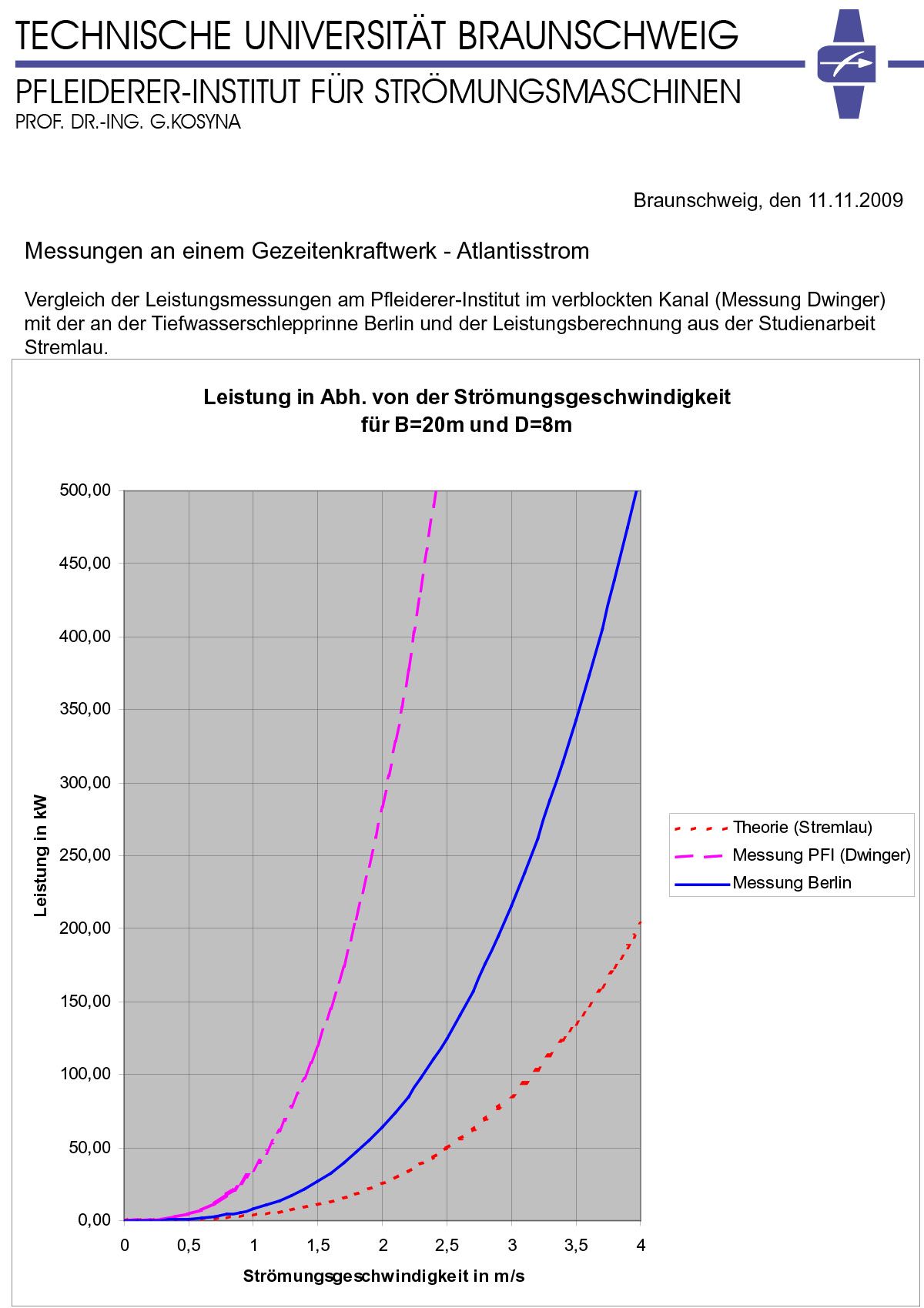
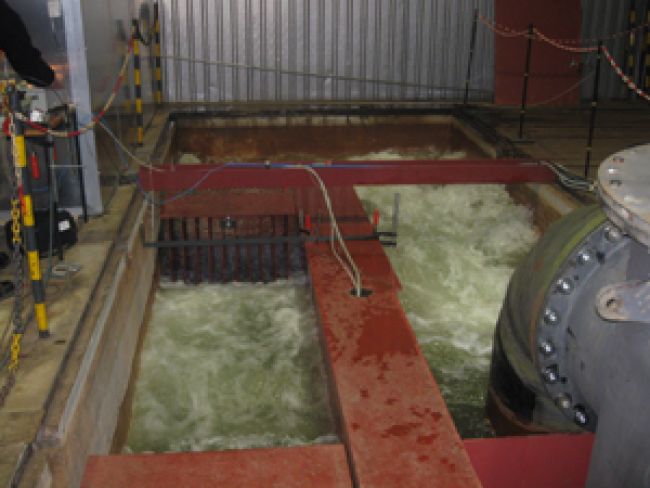
Comparison of the performance measurements at the Pfleiderer Institute in the blocked channel (measurement Dwinger) with that at the deep-water towing channel Berlin and the performance calculation from the student research project Stremlau.
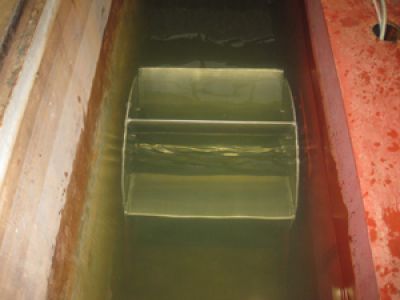
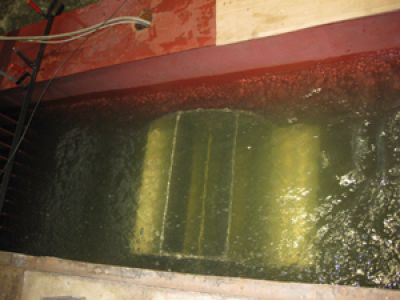
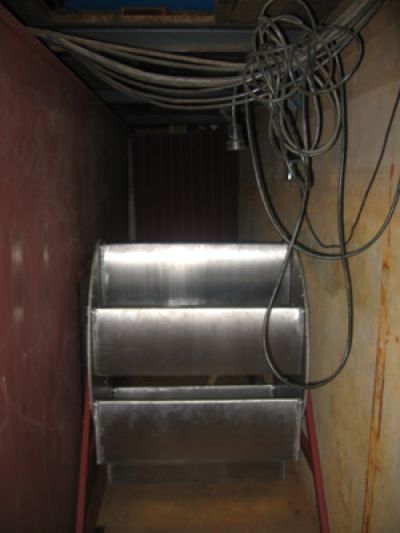
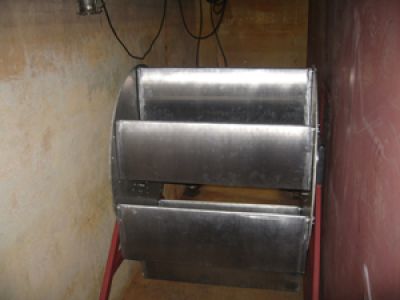
In 2002, the Pfleiderer Institute for Turbomachinery at the Technical University of Braunschweig carried out a computer-aided study of the power calculation of an Atlantisstrom tidal power plant with a diameter of 8 meters and a length of 20 meters.
The results are shown in the curve "Theory (Stremlau)"
In December 2008, the performance of an Atlantisstrom prototype with 1m diameter and 1m length was measured in a flow channel at the TU Braunschweig and extrapolated to an Atlantisstrom tidal power plant with the same size as in the Stremlau paper (20m length 8m diameter).
The results form the curve "Measurement PFI (Dwinger)".
In August 2009, the above-mentioned prototype was tested and measured for its power output in the 8-meter-wide and 4-meter-deep towing channel at the TU Berlin. The results were also extrapolated to a tidal power plant with 20 m length and 8 m diameter.
They form the curve "Measurement Berlin".
If you compare the 3 curves in the diagram you can see that according to the theoretical work "Stremlau", a 20 meter long and 8 meter diameter tidal power plant would only generate about 25 kW at a current speed of 2 m/sec.
The measurement in the towing channel Berlin resulted in 70 k/W power at the same flow velocity (2m/sec) and the same extrapolation of the measured data to a rotor with 8 meters diameter and 20 meters length.
The measurement in the flow channel of the TU Braunschweig resulted in an extrapolated power of far more than 200 k/W at the above mentioned flow velocities (2 m/sec.) and a rotor of the above mentioned size.
Thus, these above measurements show that the outputs are strongly dependent on the blocking* of the current by the tidal power plant.
In case of strong blocking, as in the flow channel of the TU Braunschweig, a power of a tidal power plant with 8 meters diameter and 20 meters length, as in the "measurement PFI (Dwinger)" would be expected.
With low blockage of a flow as in the measurement in the towing channel Berlin, a performance as in the "Measurement Berlin" would be expected.
Pictures of the tests in the deep water towing channel of the TU Berlin.
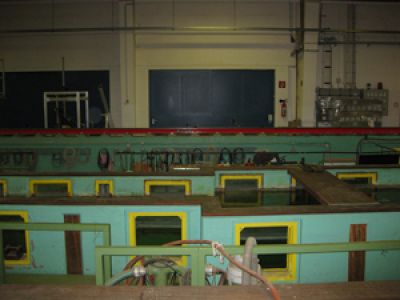
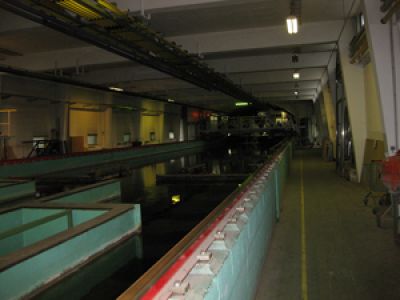
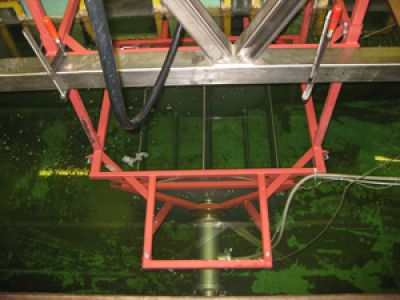
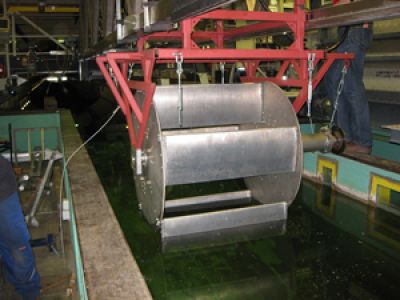
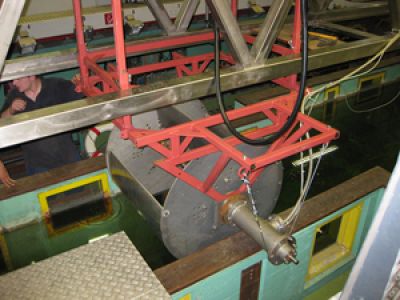
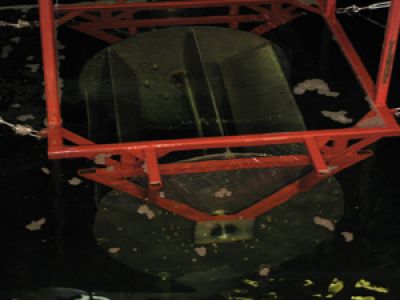
CONCLUSION:
The extrapolation of the flow channel measurements proves that our tidal power plant produces several times the power previously assumed and thus has by far the best price-performance ratio of all tidal power plants.
*Blockage: If the tidal power plant is installed in such a way that only a small amount of water can flow past the power plant on the left and right, it is called a strong blockage, e.g. under a bridge. If the tidal power plant is placed in a wide fjord instead, a lot of water can flow past the tidal power plant on the left and right and one speaks of a low blockage.



